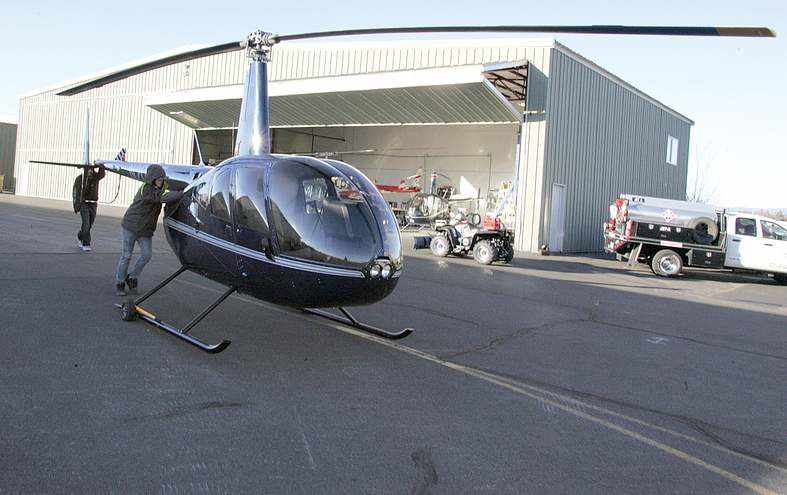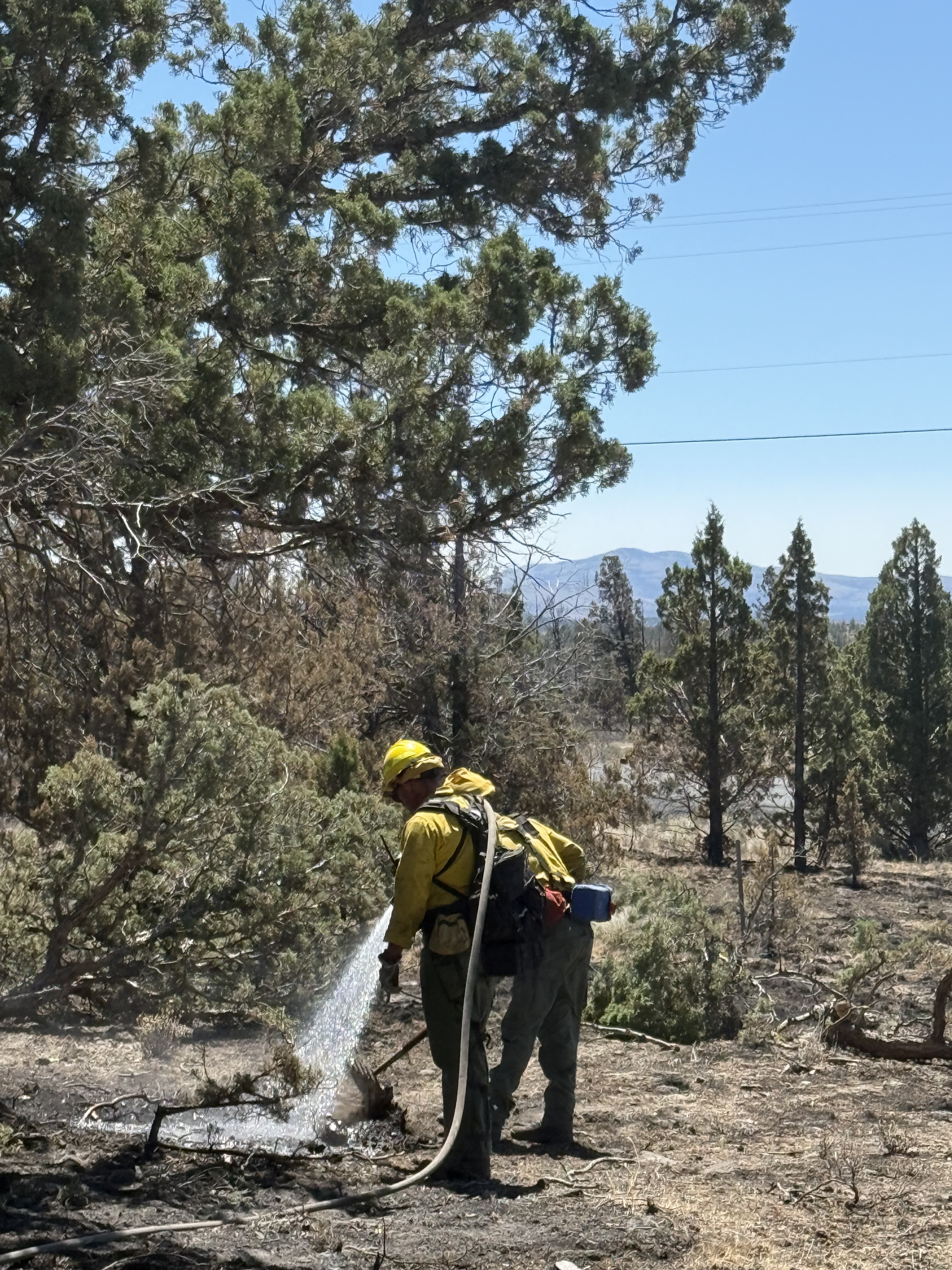Bend helicopter school soaring
Published 4:00 am Sunday, February 13, 2011

- Flight school employees wheel a helicopter out of the hangar Thursday morning at the Bend airport. Rows of airplanes sit parked between Leading Edge’s hangars and the ramp where its pilots land helicopters and since helicopters don’t have wheels students must attach them to roll them out to the flight line. “We could probably double our flight school in the next couple years if we had the space” CEO Brad Fraley said.
Four helicopters sat in a row Thursday morning on the ramp at Bend Municipal Airport as future helicopter pilots began their flight training at Leading Edge Aviation.
Enrollment in the company’s helicopter flight training program, coordinated through the aviation program at Central Oregon Community College, has soared, growing 67 percent in the last year, said Brad Fraley, Leading Edge CEO.
Trending
Nearly 100 students, many financed by the Post-9/11 GI Bill, spend part of their week in flight training at Leading Edge and attend classes on the COCC campus. But it’s not just the joint Leading Edge-COCC program prompting the flight school to grow and adding business at the Bend airport.
The first Federal Aviation Administration inspector pilots to get advanced helicopter training at Leading Edgehave arrived, Fraley said. The federal agency that oversees flight picked Leading Edge to provide the training for its own inspector pilots.
“They are wonderful,” said Airport Manager Gary Judd, referring to Leading Edge. “It’s kind of like the really, really bright spot.”
Leading Edge Aviation also offers more than the helicopter flight school, which started in fall 2006.
The company serves as an authorized sales, service and overhaul facility for Robinson Helicopter Co., of Torrance, Calif., and it still provides the service it has been offering for two decades, installing avionics systems in helicopters and fixed-wing aircraft.
“We’re actually bursting at the seams,” said Fraley, who bought the business in 2005.
Trending
He would like to continue expanding Leading Edge, but the Bend airport has limited space, although Judd has some ideas for opening up more.
Much of the company’s growth has been fueled by the COCC-Leading Edge program, which has 99students enrolled.
Those attending with assistance of the GI Bill make up about 60 percent of the enrollment.
The GI Bill pays for all tuition, normal student fees, flight training and a housing allowance — about $105,000 per student over the two-year program, which adds up to more than $10.3 million pumped into the Central Oregon economy.
“Right now, it’s one of the most (productive) economic stimulus programs in Central Oregon,” said John Miller, COCC Aviation Program director.
Helicopter training has attracted students from across the nation, Fraley said, and the first international student, from Colombia, arrived last week.
Proof is in the parking area in front of Leading Edge’s main building. The vehicles sport license plates from Alaska, California, Idaho and Utah.
“You name it,” Fraley said. “I think we’re pretty close to every state.”
No easy task
Fraley has heard flying a helicopter (which can be maneuvered forward, backward and sideways) described as “standing on a basketball juggling razor blades.”
Travis Warthen, Leading Edge vice president, said he always heard it was like “riding a unicycle on top of a basketball.”
To learn those skills, students in the aviation program spend about 15 hours a week in the classroom at COCC. They study aerodynamics, meteorology, aviation law, airport management and other topics, Miller said.
The rest of the time they train in a simulator or one of the Robinson R22 or R44 training helicopters at Leading Edge. And with the mountains, high desert and fast-changing weather conditions, Central Oregon provides students with a broad training environment, Miller and Fraley said.
The COCC-Leading Edge program also gives pilots experience flying turbine helicopters, handling external loads, such as those that hang below the aircraft, mountain flying and night-vision goggle training.
“We’re the only school in the U.S. that has an advanced helicopter operations course,” Miller said.
COCC’s aviation program also serves fixed-wing pilots, who receive their flight training from Professional Air in Bend or Butler Aircraft Services in Redmond.
Currently, however, the helicopter program has about double the enrollment, Miller said.
“Before the recession hit, we had about 120 airplane students,” he said. “Then it dropped off dramatically, and the helicopter side picked up.”
The decline, Miller suggests, may stem from the more widespread publicity generated when airlines lay off pilots. It discourages potential students.
Helicopter pilots were not affected as much. “I don’t know any helicopter pilots that got furloughed,” Miller said.
When finished, the students will have earned an associate degree in applied science and a certified flight instructor rating.
Who’s hiring?
Job forecasts for helicopter pilots vary.
The state Employment Department and an agency affiliated with the U.S. Department of Labor suggest an average employment outlook, about the same as most careers.
But the Helicopter Foundation International, an industry organization, sees a shortage of qualified commercial helicopter pilots and maintenance technicians.
Leading Edge has done its share of hiring.
It has brought on about 15 flight instructors — the best of the best, Fraley said — from its own program. Working for Leading Edge allows them to gain flight hours, building up to the 1,500- to 2,000-hour level when they become marketable as pilots for emergency medical services, tour and utility companies, and firefighting services.
One Leading Edge instructor was expected to leave Friday for Louisiana, where he will fly for an oil company in the Gulf of Mexico.
“Our instructors are getting jobs,” Fraley said.
Leading Edge has 10 to 12 helicopters of varying sizes, but they’re not often buzzing the skies over Bend.
The school generally has three practice areas east, south and west of the city, Fraley said. They are outlined on wall-sized maps in the main building, where available computers allow students to schedule flight training and the dispatch board, a large white board with sections taped off, shows upcoming flights.
“We’re very fly-friendly,” said Fraley. “The last thing we want is people mad at us.”
Leading Edge — once located in two hangars, one a Quonset-hut type — now fills three and has 30 employees, and it’s likely to grow — if it can.
Miller anticipates the aviation program growing in the spring.
“We need a couple more helicopters on the ramp,” he said.
But Leading Edge uses all the space it leases now.
Rows of airplanes sit parked between Leading Edge’s hangars and the ramp where its pilots land helicopters. As Fraley points out, helicopters do not have wheels, so students must attach them to the aircraft to roll them out to the flight line.
“We could probably double our flight school in the next couple years if we had the space,” he said.
Leading Edge and the Bend airport applied last year for state funding to build a heliport that would move helicopter activity to one end of the airport, away from the airplanes. But state transportation officials did not select it for funding.
Judd, the airport manager, said additional space might become available if the FAA gives final approval to build a parking ramp on the east side of the airport.
“We’re desperately trying to figure out something,” he said. Considering the overall economy recently, he added, “It’s a good problem.”








